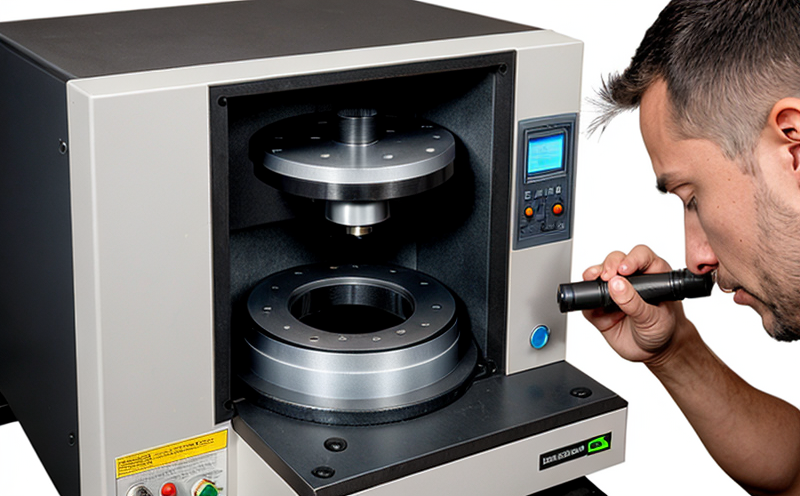ISO 17296-3 Microstructure Testing Methods for Additive Manufacturing
The ISO 17296 series provides a comprehensive framework for ensuring product integrity in additive manufacturing (AM). This section specifically addresses the microstructure evaluation through advanced metallographic techniques as outlined in ISO 17296-3. Microstructure testing is critical to understanding material properties, ensuring quality control, and validating process parameters in AM.
The primary goal of ISO 17296-3 is to standardize the methodologies used to evaluate microstructures in various AM processes such as laser powder bed fusion (LPBF), electron beam melting (EBM), direct metal laser sintering (DMLS), and other similar technologies. These processes involve unique metallurgical phenomena that can significantly influence material properties, making standardized testing essential.
The standard covers a range of techniques including optical microscopy, scanning electron microscopy (SEM), transmission electron microscopy (TEM), and energy-dispersive X-ray spectroscopy (EDX). Each technique provides insights into different aspects of the microstructure:
- Optical Microscopy: Used for general overview of grain size, morphology, and orientation.
- SEM: Offers high-resolution imaging and elemental analysis to identify defects like voids or inclusions.
- TEM: Provides atomic-level detail on crystal structure and interfaces within the material.
- EDX: Enables quantitative analysis of chemical composition at localized areas.
The standard also specifies detailed procedures for sample preparation, which is crucial to ensure accurate results. Proper sample preparation involves careful cleaning, sectioning, polishing, and etching processes tailored to the specific AM process being evaluated.
Once prepared, specimens are examined using the aforementioned techniques. The evaluation criteria include grain size distribution, porosity levels, phase composition, and defect density. These parameters are critical in assessing the quality of the AM part and ensuring it meets specified performance requirements.
The importance of microstructure testing cannot be overstated, especially for industries like aerospace, automotive, and medical devices where material integrity is paramount. By adhering to ISO 17296-3, manufacturers can ensure consistent product quality across batches and processes, thereby enhancing reliability and safety. This standard also facilitates regulatory compliance and interoperability between different manufacturing facilities.
The implementation of this standard requires specialized equipment and trained personnel. Laboratories equipped with state-of-the-art microscopes and analytical tools are essential for performing these tests accurately. The expertise of a knowledgeable metallurgical engineer is vital in interpreting the results correctly and providing actionable insights to process engineers.
Industry Applications
- Aerospace Industry: Ensures lightweight, high-strength components with minimal defects.
- Automotive Sector: Validates the quality of AM parts used in critical safety systems like engine blocks and transmission housings.
- Medical Device Manufacturing: Guarantees biocompatible materials free from harmful microstructural flaws.
- Defense & Security: Inspects critical components for high-performance weaponry and armor.
- Rail Industry: Evaluates AM parts used in the manufacture of train components like couplers and bogies.
- Consumer Electronics: Ensures the durability and performance of complex 3D-printed assemblies.
The aerospace and automotive sectors are particularly keen on microstructure testing as they demand high levels of precision and reliability. The medical device industry also places significant emphasis on quality control to ensure patient safety. In all these industries, adherence to ISO standards enhances reputation and trust in the market.
International Acceptance and Recognition
The adoption of ISO 17296-3 by various national standards bodies ensures its widespread acceptance across international borders. This standard is recognized not only for its technical rigor but also for providing a harmonized approach to microstructure evaluation in AM processes.
Many countries have incorporated this standard into their local regulations, recognizing the need for consistent testing methods and criteria. Compliance with ISO 17296-3 can be a significant differentiator for manufacturers seeking global markets. It demonstrates a commitment to quality and reliability, which are essential factors in winning international contracts.
The standard’s recognition extends beyond mere compliance; it also fosters trust among stakeholders including customers, suppliers, and regulatory bodies. This trust is crucial for maintaining long-term relationships and achieving competitive advantage in the market.
Competitive Advantage and Market Impact
Implementing ISO 17296-3 can provide significant benefits to companies operating in the additive manufacturing space:
- Enhanced Quality Assurance: By adhering to this standard, manufacturers ensure consistent quality across all their AM processes.
- Increased Market Share: Compliance with international standards enhances a company’s reputation and opens doors to new markets.
- Improved Efficiency: Standardized testing methods reduce variability and improve process efficiency.
- Reduced Risk: Ensuring product integrity through rigorous testing reduces the risk of product failures and recalls.
- Innovation Facilitation: The standard provides a robust framework for developing new AM processes and materials.
In an increasingly competitive global market, these benefits translate into tangible advantages. Companies that adopt ISO 17296-3 are better positioned to meet customer expectations, regulatory requirements, and industry standards. This ultimately leads to increased profitability and sustainable growth.





